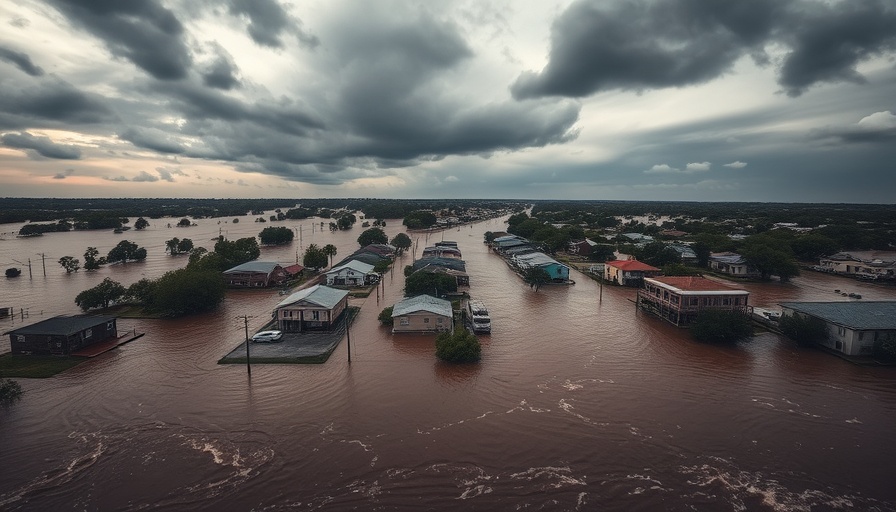
Swollen Rivers and Rural Resilience: An Unfolding Crisis in the U.S. South
Continuous downpours have led to swollen rivers flooding towns across the U.S. South, painting a grim picture for residents. While many may think of summer as a time for sunshine and leisure, communities in regions like Texas and Louisiana grapple with the destructive aftermath of relentless rain that has overwhelmed local waterways.
The Eye of Nature: Understanding the Scale of the Flooding
Heavy rainfall has become increasingly common, attributed to climate change effects that are making once-routine weather patterns unpredictable. Data from the National Weather Service indicates that rivers are flowing higher than usual, with major cities affected in Louisiana and Mississippi. This follows an already wet season, compounding stress on an ecosystem that struggles to cope with abrupt changes.
A Community's Response: The Strength of Local Solidarity
As towns struggle to respond to these challenges, residents exemplify resilience. Local organizations have mobilized to aid those affected by the flooding, providing essential supplies and support networks. Stories of community heroism abound, from neighbors lending a hand with sandbagging to volunteers distributing food and water. This spirit of togetherness is a critical lifeline amid chaos.
Unexpected Consequences: The Broader Impact of Flooding
Aside from immediate devastation, prolonged flooding introduces a series of unforeseen issues, such as infrastructure damage and public health challenges. Floodwaters often carry pollutants that threaten local water supplies. Residents are left grappling with not only their homes being at risk but also their health services becoming strained as the demand skyrockets in this time of crisis.
Lessons from the Past: Historical Context of Flooding in the South
Looking back, the South has a long history of dealing with natural disasters. Major floods have reshaped both landscapes and communities throughout the years. This ongoing narrative highlights the need for better infrastructure and emergency preparedness, as even minor rainfall can create dire situations where flood systems become overwhelmed.
Looking Ahead: Predictions for Future Weather Trends
Experts warn of more frequent and severe weather patterns as climate change progresses. Predictive models suggest that areas currently experiencing flooding can expect greater intensity and frequency of rain in future seasons. This alarming trend underscores the urgency for communities to invest in more resilient infrastructure and be prepared for such natural disasters.
Empowerment Through Knowledge: What You Can Do
Those affected by extreme weather need to arm themselves with knowledge about their local flood management plans and community resources. Understanding how to navigate emergency services and having a preparedness kit on hand can significantly mitigate the impact during flooding emergencies. This knowledge could empower individuals and neighborhoods to act swiftly in case another flood arises.
The Human Element: Stories from Those on the Frontlines
As we turn the lens on the individuals impacted, their narratives stand testament to the human spirit. Residents have shared heartbreaking accounts of loss, yet many also highlight moments of kindness and support. Whether it’s sharing a meal or rehousing those displaced, these stories remind us that amid tragedy, humanity often shines brightest.
Conclusion: The Engage Call
As the affected communities face growing challenges brought by severe weather, we all have a part to play in ensuring they receive the needed support. Whether it’s following local news on recovery efforts or volunteering time, resources, or donations, every action counts. Standing together can significantly bolster recovery efforts across the South and showcase the strength of community bonds. Let’s act together for resilience and hope.
 Add Element
Add Element  Add Row
Add Row 



 Add Row
Add Row  Add
Add 


Write A Comment